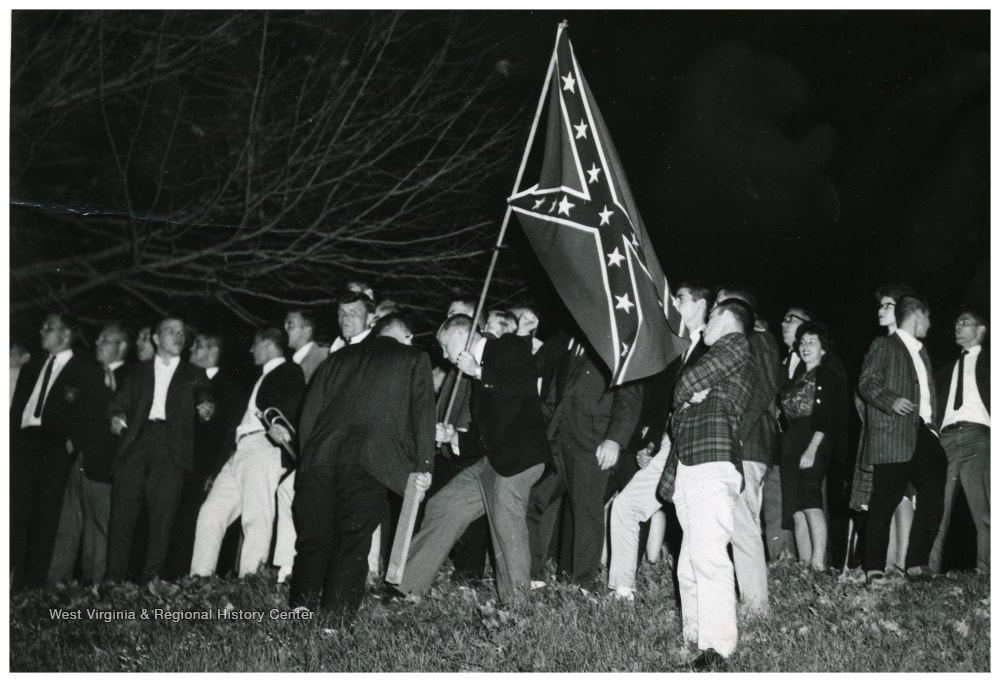|
Growing up just south of the Mason-Dixon Line, I saw a fraternity at West Virginia University fly the Confederate banner. That flag appears less often now, except in white supremacist contexts. In 2019 a third of American adults who were asked whether it represents heritage or racism (or other, or don’t now) chose heritage. The percentage was higher among respondents who were older, white, or rural. How well does the “heritage” answer hold up?
The Confederate States of America based their flag of 1861 on that of the Union. To avoid confusion in the heat of battle, southern military units adopted their own distinctive flags. Most popular was the battle flag of Robert E. Lee’s Army of Northern Virginia. After the war, it was used on soldiers’ graves and at veterans’ events. The Kappa Alpha college fraternity in Virginia displayed Lee’s ANV banner regularly. By the early 1900s it became a popular symbol of the Confederacy and the South at intercollegiate football games. The Ku Klux Klan began to raise the ANV battle flag in the 1930s and 1940s, especially after World War II. Dixiecrats, a segregationist splinter party of former Democrats, featured it in the presidential election of 1948. It came into its own in reaction to the Civil Rights Movement of the 1950s and ‘60s. Many white Americans of my generation were taught the Confederate flag represents heritage. The South has a long, rich, distinct cultural heritage. Its contributions to American literature, music, cuisine, and religion cross racial lines. To represent it with a relic from a few years of devastating warfare dishonors the many aspects of that heritage of which the South can be justly proud. Image: Kappa Alpha Fraternity Raising the Confederate Flag, West Virginia University, 1967.
Dennis Doren
1/15/2024 09:18:01 am
Although I easily accept the facts underlying your perspective, I respectfully suggest this factual perspective does not matter. We could just as well point out that an instrument of torturous death [including the virtually required portrayal(s) in each church of the instrument's use] is used to symbolize one of the major religions of the world that, in its tenets, espouses loving your neighbor. A world of other possible symbols could have been chosen (a fish was reportedly an early contender and still occasionally seen, reflecting the view that Jesus was a fisher), but that no longer matters. Once a symbol becomes "sacred", there seems little can change that fact. I very much appreciate your enlightening me about history though! 1/16/2024 04:54:14 pm
Dennis, thanks for your observation, which strikes me as partly correct. Personally, I long thought it weird for Christianity to have an instrument of capital punishments as its central symbol. The early Church more often depicted Jesus as the good shepherd. Yet I don't think the choice of bloody Jesus hanging in the cross (which may date more from the Middle Ages) is arbitrary or separated from its origin. I think it's an intentional focus on "Jesus died for your sins" in place of "Jesus taught to love one another." Comments are closed.
|
AuthorI'm a historian who writes novels and literary nonfiction. My home base is Madison, Wisconsin. Archives
July 2024
|

 RSS Feed
RSS Feed